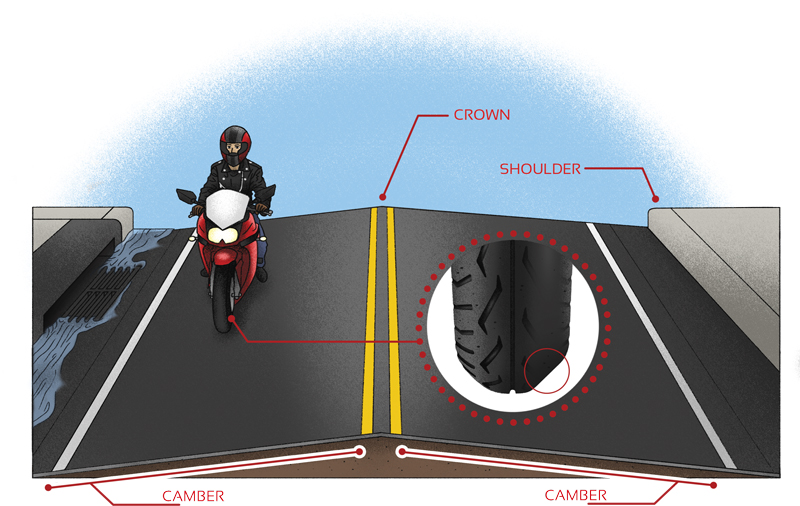
Roads are engineered to disperse rainwater and minimize pooling on the road surface. The way those clever civil engineers achieve that is by designing roads with a crowned profile. The surface is higher in the middle (where the double-yellow is) and slopes downward to each side of the road—a bit like a pitched roof on a house. The cross-slope design does much to make wet-weather riding safer. But motorcyclists should also consider how a crowned road comes into play even when the road is dry.
We travel on the right side of the road here in America. On a crowned road, that means the pavement slopes from its highest point at the left side of our lane down to its lowest point on the right edge of the lane. Have you ever noticed that the left side of your bike’s tires wear more than the right? It’s because your bike travels along a slanted plane for miles on end.
But here’s a new slant: Think about how the crown effect comes into play when the pavement turns. In right-hand corners, the cross slope of the road creates a banked turn within our lane, providing slightly more traction, ground clearance and more responsive steering as we lean into the curve.
Conversely, a left-hand curve has a reverse camber as the pavement slopes away from the rider, slightly reducing traction and ground clearance and contributing to less responsive steering. This is one reason many riders find left-hand curves to be more challenging. A more conservative entry speed, combined with positioning your head and upper body toward the inside of the curve will reduce the bike’s lean angle and more than compensate for any compromise in ground clearance and traction due to the crowned road. With a little practice, those crowned left-hand curves may become your crowning achievement!


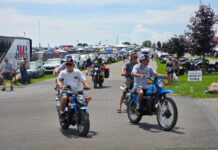

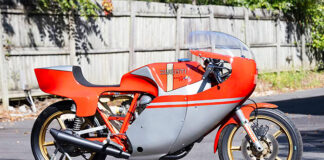
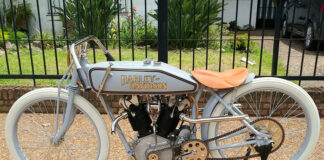
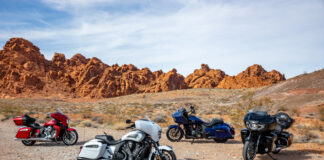

Good point, although we try to keep transverse grades between 2 and 4 percent.
When I read the article in my paper copy of Rider my main thought was that it completely disregarded Superelevation. I am a retired Police Officer. Our crash investigation training includes knowledge of the crowning of roadways for rain water runoff and the banking of curves to use gravitational force to counteract centrifugal force. This banking is known as “Superelevation”. I am also a licensed pilot. In pilot training we learn that it is the horizontal component of lift which turns an aircraft and not the rudder as non-pilots think. Banking an aircraft and banking a roadway serve the same purpose.